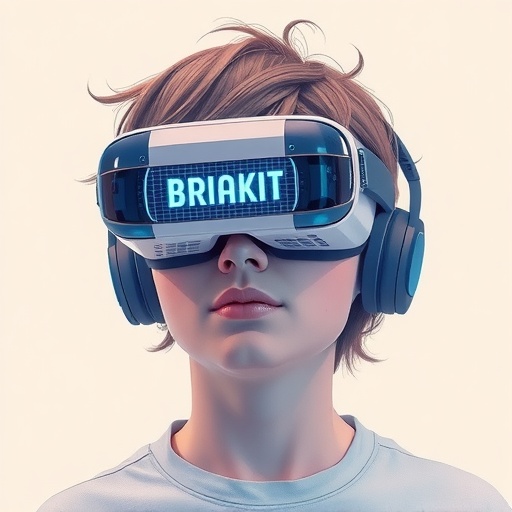In a groundbreaking study published in the Journal of Autism and Developmental Disorders, researchers from the Project PHoENIX initiative have focused on aligning extended reality (XR) research with the unique priorities and lived experiences of the autistic community. This transformative effort seeks to bridge a critical gap between technological advancements in XR and the needs of individuals on the autism spectrum. The study emphasizes the importance of including the voices of autistic individuals in the development of XR applications, ensuring that these tools are not only innovative but also genuinely beneficial to those they aim to serve.
The research conducted by Schmidt, Lu, and Glaser highlights an urgent need for a paradigm shift in how XR technologies are designed and implemented. It underscores the fact that much of the existing research has been conducted without sufficient input from the autistic community, often leading to experiences that do not resonate with their specific challenges or preferences. The researchers advocate for a collaborative approach where autistic individuals are not just participants but active collaborators in the research process, sharing insights that can lead to more effective solutions.
Through qualitative methods including interviews and focus groups, the researchers gathered first-hand accounts from autistic individuals regarding their experiences with existing XR technologies. These insights reveal a spectrum of needs, ranging from social communication challenges to sensory sensitivities, that must be taken into account when designing XR interventions. The study provides a rich narrative, elucidating how individuals on the spectrum perceive and interact with digital environments, and the gaps that exist in current offerings.
Among the many key findings of the study is the identification of specific features that autistic individuals find navigating XR environments more intuitive and user-friendly. This includes customizable sensory settings and the option to choose various avatars that resonate with their self-identity. By prioritizing these features, designers could significantly enhance the accessibility and enjoyment of XR platforms for autistic users, ultimately fostering a more inclusive digital landscape.
Moreover, the study analyzes the potential of XR technologies to serve as therapeutic tools, particularly in social skill development. The researchers suggest that the immersive nature of XR could offer unprecedented opportunities for autistic individuals to practice social interactions in a safe and controlled environment. By engaging in simulated scenarios, users can learn to navigate social nuances, enhancing their confidence and capabilities in real-world situations. However, they caution that these therapeutic applications must be tailored to individual needs, reinforcing the importance of user-centered design principles.
The paper also touches upon the ethical implications of developing XR technologies for the autistic community. It raises questions about consent, representation, and the risks of oversimplifying or misrepresenting the autistic experience in digital formats. The researchers argue that inclusivity should be at the forefront of XR development, emphasizing that any technology created must empower users rather than perpetuate stereotypes or create new barriers.
As the study highlights the promising potential of XR in improving the lives of individuals with autism, it also calls for a more refined understanding of autism itself. The narrative unravels the complexity and diversity within the autistic community, advocating for a nuanced approach to research and application design. This involves recognizing that needs will vary significantly from one individual to another, and that a one-size-fits-all approach is unlikely to be effective.
The researchers propose a framework for future XR development that integrates input from autistic individuals throughout the design process. This includes the creation of advisory panels consisting of autistic advocates who can review and provide feedback on XR applications before they are released to the public. By embedding this feedback loop into the development stages, the resulting technologies can better reflect the actual needs and preferences of autistic users.
Additionally, the study emphasizes the significance of collaborative partnerships between researchers, developers, and the autistic community. By fostering these connections, stakeholders can co-create innovative XR solutions that are both cutting-edge and socially responsible. This collaborative spirit can also drive the creation of educational resources that encourage greater awareness and understanding of autism among XR developers and researchers.
The researchers recognize the challenges inherent in such a paradigm shift, including potential resistance from within the tech community. However, they argue that the urgency of creating meaningful and beneficial tools for autistic individuals outweighs these challenges. The goal is not only to harness XR technology for better outcomes but also to champion a model of co-creation that prioritizes empathy, inclusivity, and respect for the lived experiences of all users.
With the publication of these findings, the Project PHoENIX team hopes to spark a wider conversation about the role of XR technologies in enhancing the quality of life for autistic individuals. Their work stands as a call to action for researchers and developers alike to engage in thoughtful and inclusive practices that recognize the unique perspectives of autistic individuals as invaluable to the design process.
In conclusion, the insights from the Project PHoENIX study pave the way for a more inclusive future in XR research and application, one that is firmly rooted in the real-life experiences of the autistic community. As researchers continue to explore the powerful intersection of technology and autism, the hope is that they will do so with a commitment to collaboration, respect, and a dedication to improving lives.
Subject of Research: Alignment of XR Research with Autistic Priorities and Lived Experiences
Article Title: Aligning XR Research with Autistic Priorities and Lived Experiences: Insights from the Project PHoENIX Study
Article References:
Schmidt, M., Lu, J.J., Glaser, N. et al. Aligning XR Research with Autistic Priorities and Lived Experiences: Insights from the Project PHoENIX Study. J Autism Dev Disord (2025). https://doi.org/10.1007/s10803-025-07023-3
Image Credits: AI Generated
DOI:
Keywords: Autistic Community, Extended Reality, Interaction Design, Co-creation, Inclusivity, Therapeutic Applications




